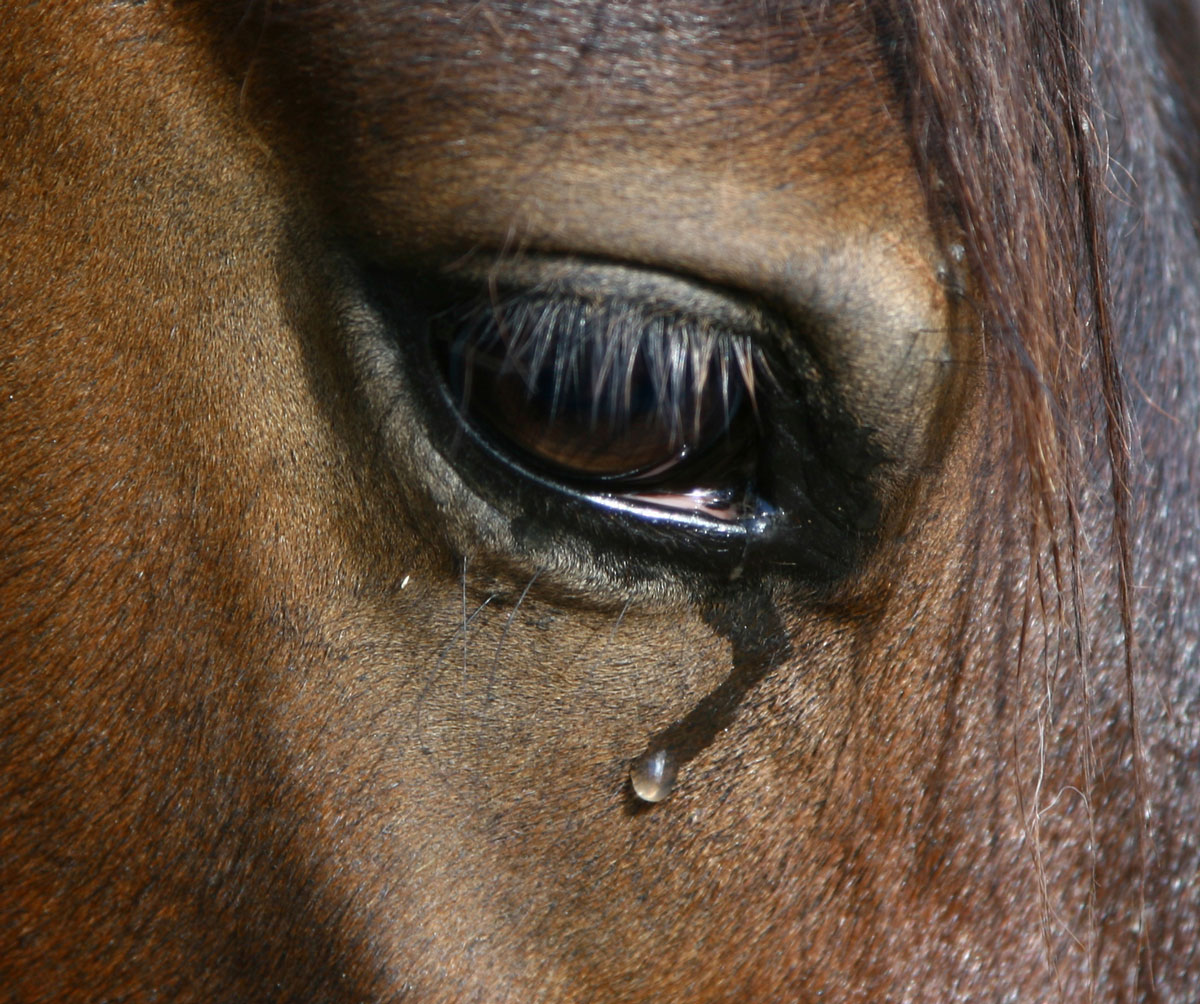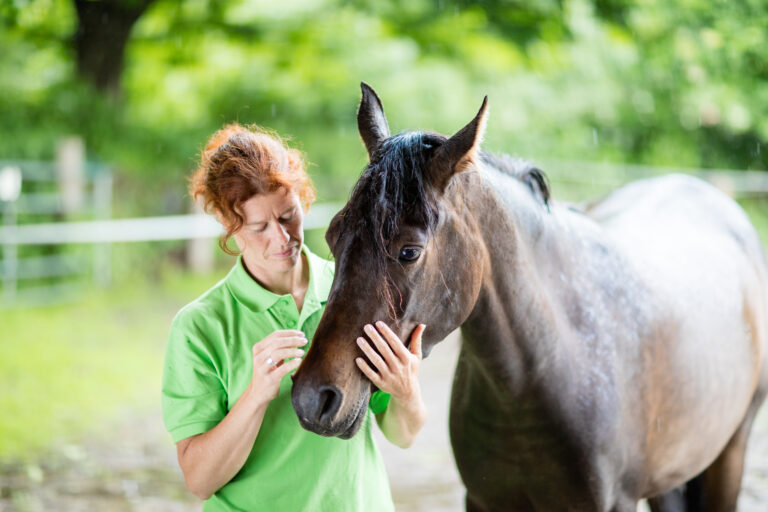
A painful eye from ocular trauma or ulcers has the potential to affect a horse’s entire demeanor due to an intense pain response from a multiplex of sensory innervation to the cornea. Depending on the ocular problem, a variety of management and pain relief techniques are available.
One Hungarian study compared the effects of two NSAIDs and acupuncture on pain relief [Makra, Z.; Csereklye, N.; Riera, M.M.; McMullen, R.J. Jr.; Veres-Nyéki, K. Effects of intravenous flunixin meglumine, phenylbutazone, and acupuncture on ocular pain scores in the horse: a pilot study, Journal of Equine Veterinary Science 2021; https://doi.org/10.1016/j.jevs.2021.103375].
The study was controlled, blinded and randomized in four horses undergoing manual debridement of the corneal epithelium. Pain from this procedure was anticipated to last at least 48 hours to be able to assess pain management. The debridement did not exert any long-lasting effects. Each horse received all treatments as well as serving as a control. The procedure was done alternating between right and left eyes on four different occasions with a four-week interval of rest between debridement sessions. Pain relief was offered four hours after each session by one of the following options: a) flunixin meglumine IV 1.1 mg/kg; b) phenylbutazone IV 4.4 mg/kg; c) electroacupuncture applied for 20 minutes; and d) control of IV saline.
A scale of three pain scores (mild, moderate, severe) were evaluated based on heart rate, corneal touch threshold, multiple ocular signs and behavioral parameters of comfort, appetite and head rubbing. The ocular signs included: blepharospasm, tearing, eyelid swelling, corneal opacity, and conjunctival hyperemia/chemosis. Pain assessments were made prior to corneal debridement, and at 4, 6, 8 and 10 hours post-op, then every four hours for the first two days, then twice daily through Day 5. All corneal wounds were healed with no flourescein uptake by an average of five days.
Heart rate, corneal touch threshold, response to palpation of adnexa and behavioral changes were unreliable parameters to use in scoring ocular pain. Blepharospasm most consistently correlated with pain.
Effective pain relief occurred in all three treatment groups compared to the control horses. The most significant difference was identified between the flunixin and control groups in the first 46 hours. (Two horses in the control group required rescue pain management with IM morphine, but because morphine has no anti-inflammatory effects, it did not attenuate pain.)
Intravenous flunixin meglumine gave better pain relief than IV phenylbutazone, which gave better pain relief than electro-acupuncture.
The authors are recommending flunixin meglumine as a preferential treatment rather than phenylbutazone to manage corneal pain.








